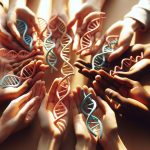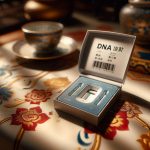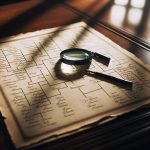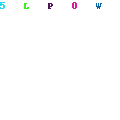The International Association of Jewish Genealogical Societies (IAJGS) serves as a key figurehead, connecting about 95 genealogical societies worldwide that are dedicated to Jewish history. As Kenneth Bravo approaches the end of his second tenure leading the IAJGS, we had the chance to delve into how family history research has evolved. The advancements in technology have significantly broadened what’s possible in tracing back lineages and uncovering ancestral stories. This progress presents an exciting frontier for those keen on exploring their roots, offering tools and resources that were unimaginable just a few decades ago.
What is the purpose of IAJGS?
Our mission revolves around supporting leaders of various community groups in streamlining their activities. These groups range in size and the level of expertise varies from one to another. Our support extends to offering insights and resources aimed at bolstering membership growth and enhancing services for existing members.
Annually, we conduct a grand event focused on Jewish genealogy, often likened to a feast due to its vast array of information – truly, it’s an abundance that exceeds what one can grasp in a single sitting. This event is your golden ticket if you’re keen on exploring any facet of Jewish genealogy as we bring together some of the foremost authorities in the field ready to share their knowledge and guide attendees through their explorative journey.
Over recent years, circumstances have pushed us towards holding this rich gathering virtually. However, plans are underway for hosting this year’s edition in early August 2021 with aspirations that by the following year, we’ll resume our tradition of face-to-face interactions.
Key actions to start researching your family’s past
Embarking on the journey to trace your roots? Begin where you are—right at home. It’s a common mistake for enthusiastic genealogists to immediately book flights to their ancestors’ homeland, only to realize they’re missing crucial details such as the specific town or village their forebears hailed from.
First up, have a chat with your family elders and any of their siblings. They’re treasure troves of tales and tidbits about your lineage. Use these stories as the foundation of your quest. Subsequently, dive into local records to corroborate these narratives. This groundwork is vital before you even consider hopping across borders in search of more clues.
Once you’ve exhausted resources at home and have pinpointed exactly where abroad you need to focus, that’s when things might get tricky—especially if there’s a language barrier. If sifting through foreign records feels like deciphering ancient hieroglyphs, it might be time to call in the cavalry: a professional researcher who knows the lay of the land can be invaluable here.
Before entrusting this task to someone, do your homework; vet them thoroughly and agree on a budget upfront. That way, you won’t end up with any nasty surprises when it comes time to settle accounts.
In essence, tracing your ancestry is akin to piecing together a fascinating puzzle—one that begins right on your doorstep before possibly taking you across continents. Patience and meticulous planning are key; take one step at a time and enjoy uncovering the chapters of your unique family saga.
Tracing Jewish heritage in a history of global migration
Back in 1974, the landscape was vastly different—no personal computers or internet access. Fast forward to today, and we’re living in a transformed environment. The luxury of accessing numerous online databases from the comfort of one’s home has replaced the old system of waiting for records via airmail after sending letters and checks.
The modern world offers both blessings and challenges. Communication has become boundless; we can now connect with anyone across the globe. Even language barriers are easily navigated through written communication, thanks to tools like Google Translate. Although translating idioms can be tricky, there are strategies to work around these obstacles.
However, it’s not all smooth sailing; time zones continue to pose a limitation on seamless interaction. Gone are the days when I relied solely on airmail letters—a shift that underscores just how much technology has revolutionized our ability to communicate and access information.
What’s your opinion on sites like Ancestry and MyHeritage?

To effectively tap into your family’s past, engaging with platforms like Ancestry, FamilySearch, and MyHeritage is advisable. They are constantly updated with fresh records every week, promising new discoveries over time. If your initial search yields no results, it’s wise to revisit these sites after a few months for any updates.
A personal experience highlighted this approach’s value when searching for information about relatives from Belarus who were victims of the Nazi invasion in 1941. Despite numerous attempts, no details emerged until a new document surfaced on the Yad Vashem website, revealing names that had long been missing from our family narrative.
This breakthrough was thanks to a Page of Testimony added by a relative who survived the war under challenging circumstances. This discovery not only connected me with previously unknown family members but also filled a gap in our collective memory left by those we lost.
The takeaway here is clear: persistence pays off in genealogical research. New data can surface at any time, turning what seemed like dead ends into pathways that lead to meaningful connections and understandings of our ancestry. So keep digging, and don’t lose hope, your next significant find could be just around the corner.
How DNA tests can improve tracing family history
DNA analysis acts as a modern layer to conventional genealogical studies. Understanding one’s ancestry is crucial before delving into DNA data. The foundation of genealogy enhances the relevance and clarity of DNA results.
One encounters challenges such as name changes due to marriage, common in many cultures where women adopt their husband’s surname. This tradition can obscure lineage connections across generations, making it difficult to recognize familial ties through surnames alone within your DNA matches.
The insight provided by DNA tests can confirm existing research and broaden one’s understanding of family connections. However, context is key for interpreting this information effectively. Combining traditional genealogy with DNA technology yields comprehensive insights into one’s heritage.
Selecting the right DNA test service: what to consider?
Exploring your family tree through DNA testing can often feel like a treasure hunt where the map keeps changing. The twist? Your closest allies, perhaps even unbeknownst to you, might already be part of this quest, scattered across different companies’ databases. This realization underpins the importance of widening your search net as far and wide as possible.
The journey begins when you choose to undergo DNA testing with a particular company. However, what many don’t realize at first is that their relatives may have already embarked on similar quests but with other providers. This disjoint in platforms can lead to missed connections, leaving some family ties undiscovered indefinitely.
To bridge this gap between various databases and enhance the odds of finding all possible relatives, it’s advisable to utilize services like GEDmatch. By uploading your test results here, you make them accessible across numerous platforms simultaneously. It’s an elegant solution that sidesteps the limitations imposed by exclusively sticking to one provider’s database.
Moreover, for those who are keen on casting the widest net possible in their familial search, there’s merit in either taking tests from multiple companies or consolidating results in a common space like GEDmatch. Such strategies significantly increase your chances of painting a fuller picture of your ancestry by drawing upon an expansive pool of data.
Ultimately, navigating the vast seas of genetic information requires strategy akin to setting sail across uncharted waters. By ensuring your data is visible across platforms and tapping into as large a database as possible, you’re better equipped to uncover every branch and leaf on your family tree.
Doesn’t this infringe on personal privacy?
The topic of privacy in the realm of DNA testing is a hotly contested one. Many argue that once an individual consents to share their genetic information with a company, they’ve essentially waived their right to privacy in that context. This notion stems from the belief that autonomy over one’s genetic data lies squarely in the hands of the individual concerned. However, complications arise when considering shared DNA among relatives, as obtaining explicit consent from every related party becomes virtually impossible.
In exploring this terrain, insights emerge not just about legal nuances but also personal narratives forged through genealogical research. One intriguing account involves learning about an ancestor who owned a renowned seafood establishment in San Francisco during the 1920s—an era when being visited by someone in a chauffeur-driven vehicle was considered extremely prestigious. This anecdote underscores how DNA testing doesn’t merely confirm biological connections; it breathes life into historical family tales, offering concrete evidence of lineage and heritage.
Genealogy can be likened to unraveling a massive crossword puzzle where solving key clues significantly aids in piecing together other parts of the mystery. It’s all about connecting dots—from one relative to another—until a comprehensive family portrait emerges from what initially seemed like disparate fragments.
Overall, navigating through ancestral histories via DNA analysis presents both challenges and rewards—balancing privacy concerns with the profound impact of uncovering familial bonds and stories etched across generations.
What happens when you reach out to someone claiming to be a relative?
Since the mid-seventies, I’ve been immersed in the fascinating world of genealogy and DNA testing. This journey has shown me that people’s interest in their ancestry can vary widely. Some are eager to dive deep into family histories, while others seem indifferent, showing little to no interest in their lineage or relatives.
The advent of DNA testing added a new dimension to this exploration, allowing us to discover connections we never knew existed. Most companies facilitating these tests offer a feature where you can reach out to potential relatives via email. However, it’s not always as rewarding as one might hope. Often, attempts to make contact go unanswered or lead to dead ends with individuals who have little knowledge or interest in their heritage.
It appears that for many, the allure of DNA testing lies more in uncovering ethnic percentages than in forging connections with long-lost family members. On the other hand, I find immense value in piecing together our familial puzzles and reaching out across branches of our shared tree.
In essence, while some are satisfied with just a glimpse at their genetic makeup through colorful charts and graphs, my passion lies deeper—in the stories and bonds that connect us all as part of a larger human family.




















